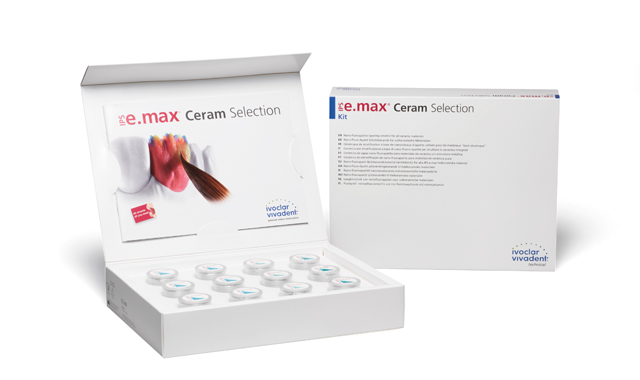Master Series porcelain powders now available
The powders offer options for light absorption, light reflection and enamel reproduction.

The IPS e.max Ceram Selection Master Series is presented as the focal point of the Ivoclar Vivadent porcelain system. Evolved from decades of custom-shade development by experts in the fine art of dental ceramics, including Oliver Brix (Germany), August Bruguera (Spain) and Gérald Ubassy (France), these powders are engineered to offer options for light absorption, light reflection, and enamel reproduction and are designed to deliver exquisite, life-like effects.
The new Enamel and Effect materials are available in 12 shades, which are divided into three groups. The six “Special Enamel” powders have an enamel-like translucency. They are used to reportedly adjust the saturation and chroma of the restoration. As their names suggest, the three “Light Reflector” Effect powders are designed to reflect light while the three “Light Absorber” powders are engineered to absorb light.
Special Enamel
The “Special Enamel“ powders reportedly show an enamel-like translucency and include the following shades: aqua, citrine, honey, apricot, quartz and diamond. Of these shades, citrine, honey, apricot and quartz are designed to adjust saturation and chroma and to accentuate the enamel area. Aqua is an intensively colored enamel powder that’s engineered to highlight the bluish translucent appearance of incisal edges. Diamond is said to be the ideal universal incisal material for the anterior region.
Light Reflector
The “Light Reflector” materials are light reflecting Effect powders and are available in the following shades: silk, salmon and cream. Silk reportedly increases the brightness of the incisal area. Salmon and cream are suitable for imitating the color of reflecting areas in the cervical and incisal third.
Light Absorber
The “Light Absorber” materials are light absorbing Effect powders and are available in the following shades: fog, lavender and taupe. Fog is designed to reduce the brightness of the incisal area. Lavender and taupe are said to create light absorbing areas in the incisal and cervical third and in proximal edges.
ACTIVA BioACTIVE Bulk Flow Marks Pulpdent’s First Major Product Release in 4 Years
December 12th 2024Next-generation bulk-fill dental restorative raises the standard of care for bulk-fill procedures by providing natural remineralization support, while also overcoming current bulk-fill limitations.